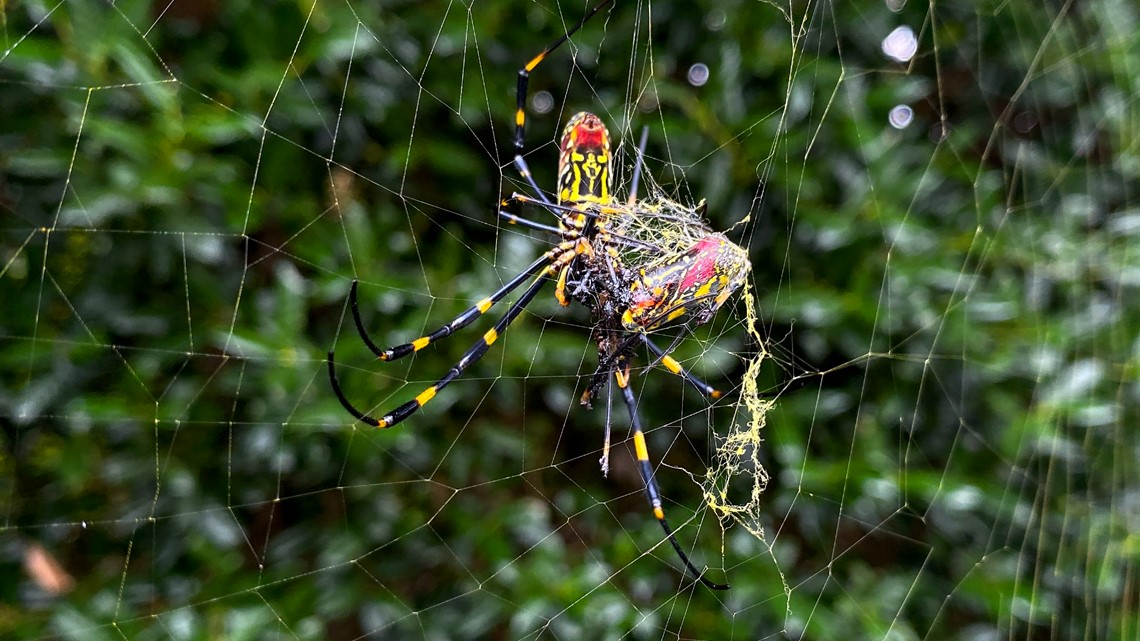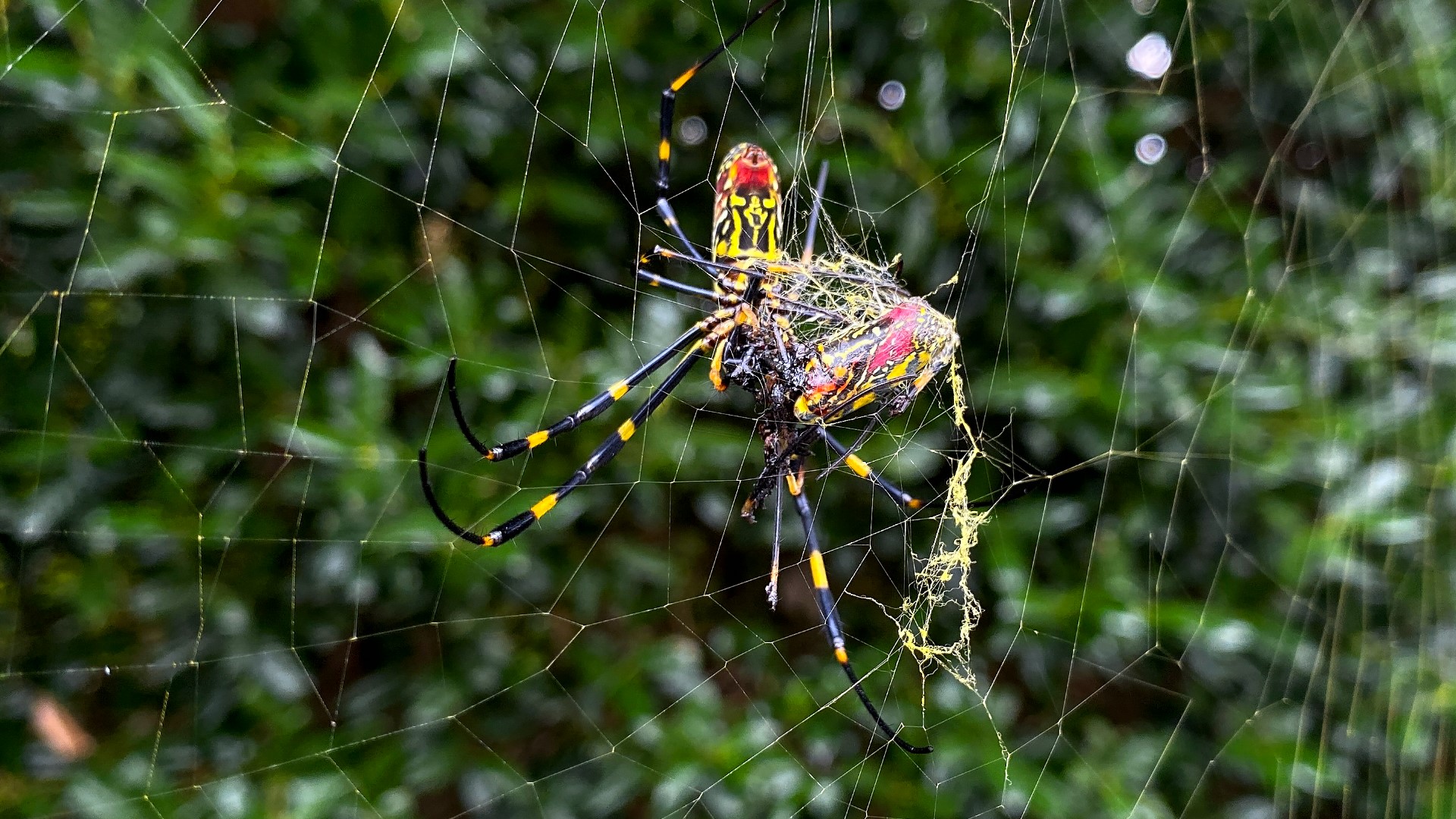ATLANTA — Researchers say a large spider native to East Asia that proliferated in Georgia last year could spread to much of the East Coast.
The Joro spider's golden web took over yards all over north Georgia in 2021, unnerving some residents. The spider was also spotted in South Carolina, and entomologists expected it to spread throughout the Southeast.
A new study suggests it could spread even farther than that. The Joro appears better suited to colder temperatures than a related species, researchers at the University of Georgia said in a paper published last month.
It has about double the metabolism, a 77% higher heart rate and can survive a brief freeze that kills off its relatives, the study found.
Are Joro spiders venomous?
Technically, they are venomous -- but don't panic unless you're a bug. Virtually all spiders are venomous. As Axios reports, Joro spiders are harmless, and their fangs aren't even big enough to puncture human skin.
"They are actually very, very timid," study author Andy Davis said. "I've got some research ongoing in my lab right now looking at their behavior. And it turns out they're more timid than most of your native spiders."
Are Joro spiders invasive?
The spiders are non-native to the U.S., but it's too early to tell whether they're invasive. To get that definition, a non-native species must also cause harm in its new environment.
The environmental impact of Joro spiders in the U.S. isn't clear -- and some scientists believe they are benign. Davis said the spiders have actually been beneficial to some native birds as an additional food source.
It does look like the environment in the U.S. feels pretty good to the spiders. The researchers noted that Joros are found in much of Japan, which has a similar climate to much of the U.S.
“Just by looking at that, it looks like the Joros could probably survive throughout most of the Eastern seaboard here, which is pretty sobering,” Davis had said in a statement.
What does a Joro spider look like, and what size is it?
The Joro — Trichonephila clavata — is part of a group of spiders known as orb weavers for their highly organized, wheel-shaped webs. Joro females have colorful yellow, blue and red markings on their bodies and can measure three inches across when their legs are fully extended.


How do Joro spiders spread?
They parachute! Seriously. According to the University of Georgia, the spiders can use their silk to catch the wind and sail to a new spot. That's one reason they were able to spread so fast in Georgia.
Of course, even the most intrepid spider would have a hard time flying across the ocean. It’s not clear exactly how and when the first Joro spiders arrived in the U.S., but researchers say it's likely they were accidental stowaways in shipping containers.
Jonathon Raymond contributed to this report.

